1.Identification
1.1 GHS Product identifier
| Product name | tributyltin oxide |
|---|
1.2 Other means of identification
| Product number | - |
|---|---|
| Other names | Distannoxane, hexabutyl- |
1.3 Recommended use of the chemical and restrictions on use
| Identified uses | For industry use only. |
|---|---|
| Uses advised against | no data available |
1.4 Supplier's details
| Company | MOLBASE (Shanghai) Biotechnology Co., Ltd. |
|---|---|
| Address | Floor 4 & 5, Building 12, No. 1001 North Qinzhou Road, Xuhui District, Shanghai, China |
| Telephone | +86(21)64956998 |
| Fax | +86(21)54365166 |
1.5 Emergency phone number
| Emergency phone number | +86-400-6021-666 |
|---|---|
| Service hours | Monday to Friday, 9am-5pm (Standard time zone: UTC/GMT +8 hours). |
2.Hazard identification
2.1 Classification of the substance or mixture
Acute toxicity - Oral, Category 3
Acute toxicity - Dermal, Category 4
Skin irritation, Category 2
Eye irritation, Category 2
Specific target organ toxicity – repeated exposure, Category 1
Hazardous to the aquatic environment, long-term (Chronic) - Category Chronic 1
2.2 GHS label elements, including precautionary statements
| Pictogram(s) |    |
|---|---|
| Signal word | Danger |
| Hazard statement(s) | H301 Toxic if swallowed H312 Harmful in contact with skin H315 Causes skin irritation H319 Causes serious eye irritation H372 Causes damage to organs through prolonged or repeated exposure H400 Very toxic to aquatic life H410 Very toxic to aquatic life with long lasting effects |
| Precautionary statement(s) | |
| Prevention | P264 Wash ... thoroughly after handling. P270 Do not eat, drink or smoke when using this product. P280 Wear protective gloves/protective clothing/eye protection/face protection. P260 Do not breathe dust/fume/gas/mist/vapours/spray. P273 Avoid release to the environment. |
| Response | P301+P310 IF SWALLOWED: Immediately call a POISON CENTER/doctor/… P321 Specific treatment (see ... on this label). P330 Rinse mouth. P302+P352 IF ON SKIN: Wash with plenty of water/... P312 Call a POISON CENTER/doctor/…if you feel unwell. P362+P364 Take off contaminated clothing and wash it before reuse. P332+P313 If skin irritation occurs: Get medical advice/attention. P305+P351+P338 IF IN EYES: Rinse cautiously with water for several minutes. Remove contact lenses, if present and easy to do. Continue rinsing. P337+P313 If eye irritation persists: Get medical advice/attention. P314 Get medical advice/attention if you feel unwell. P391 Collect spillage. |
| Storage | P405 Store locked up. |
| Disposal | P501 Dispose of contents/container to ... |
2.3 Other hazards which do not result in classification
none
3.Composition/information on ingredients
3.1 Substances
| Chemical name | Common names and synonyms | CAS number | EC number | Concentration |
|---|---|---|---|---|
| tributyltin oxide | tributyltin oxide | 56-35-9 | none | 100% |
4.First-aid measures
4.1 Description of necessary first-aid measures
General advice
Consult a physician. Show this safety data sheet to the doctor in attendance.
If inhaled
Fresh air, rest. Half-upright position. Refer for medical attention.
In case of skin contact
Rinse and then wash skin with water and soap. Refer for medical attention .
In case of eye contact
First rinse with plenty of water for several minutes (remove contact lenses if easily possible), then refer for medical attention.
If swallowed
Give one or two glasses of water to drink. Refer for medical attention .
4.2 Most important symptoms/effects, acute and delayed
ACUTE/CHRONIC HAZARDS: This material is toxic by ingestion and inhalation and is a skin and eye irritant.
4.3 Indication of immediate medical attention and special treatment needed, if necessary
Absorption, Distribution and Excretion
The calculated half-time for elimination of TBTO residues in mice is 29 days.
5.Fire-fighting measures
5.1 Extinguishing media
Suitable extinguishing media
Provision to contain effluent from fire extinguishing.
5.2 Specific hazards arising from the chemical
This chemical is probably combustible.
5.3 Special protective actions for fire-fighters
Wear self-contained breathing apparatus for firefighting if necessary.
6.Accidental release measures
6.1 Personal precautions, protective equipment and emergency procedures
Use personal protective equipment. Avoid dust formation. Avoid breathing vapours, mist or gas. Ensure adequate ventilation. Evacuate personnel to safe areas. Avoid breathing dust. For personal protection see section 8.
6.2 Environmental precautions
Personal protection: chemical protection suit including self-contained breathing apparatus. Do NOT let this chemical enter the environment. Carefully collect remainder. Then store and dispose of according to local regulations. Do NOT wash away into sewer.
6.3 Methods and materials for containment and cleaning up
Do NOT wash away into sewer. Carefully collect remainder, then remove to safe place. Do NOT let this chemical enter the environment.
7.Handling and storage
7.1 Precautions for safe handling
Avoid contact with skin and eyes. Avoid formation of dust and aerosols. Avoid exposure - obtain special instructions before use.Provide appropriate exhaust ventilation at places where dust is formed. For precautions see section 2.2.
7.2 Conditions for safe storage, including any incompatibilities
Well closed. Provision to contain effluent from fire extinguishing. Store in an area without drain or sewer access.NO open flames.
8.Exposure controls/personal protection
8.1 Control parameters
Occupational Exposure limit values
no data available
Biological limit values
no data available
8.2 Appropriate engineering controls
Handle in accordance with good industrial hygiene and safety practice. Wash hands before breaks and at the end of workday.
8.3 Individual protection measures, such as personal protective equipment (PPE)
Eye/face protection
Safety glasses with side-shields conforming to EN166. Use equipment for eye protection tested and approved under appropriate government standards such as NIOSH (US) or EN 166(EU).
Skin protection
Wear impervious clothing. The type of protective equipment must be selected according to the concentration and amount of the dangerous substance at the specific workplace. Handle with gloves. Gloves must be inspected prior to use. Use proper glove removal technique(without touching glove's outer surface) to avoid skin contact with this product. Dispose of contaminated gloves after use in accordance with applicable laws and good laboratory practices. Wash and dry hands. The selected protective gloves have to satisfy the specifications of EU Directive 89/686/EEC and the standard EN 374 derived from it.
Respiratory protection
Wear dust mask when handling large quantities.
Thermal hazards
no data available
9.Physical and chemical properties
| Physical state | Clear colorless liquid |
|---|---|
| Colour | Slightly yellow liquid. |
| Odour | Weak odor |
| Melting point/ freezing point | -45ºC |
| Boiling point or initial boiling point and boiling range | 180°C/2mmHg(lit.) |
| Flammability | Combustible. |
| Lower and upper explosion limit / flammability limit | no data available |
| Flash point | 190°C |
| Auto-ignition temperature | no data available |
| Decomposition temperature | no data available |
| pH | no data available |
| Kinematic viscosity | 4.8 Centistokes at 25°C |
| Solubility | In water:INSOLUBLE |
| Partition coefficient n-octanol/water (log value) | log Kow= 3.84 |
| Vapour pressure | <0.01 mm Hg ( 25 °C) |
| Density and/or relative density | 1.17g/mLat 25°C(lit.) |
| Relative vapour density | no data available |
| Particle characteristics | no data available |
10.Stability and reactivity
10.1 Reactivity
no data available
10.2 Chemical stability
Stable under recommended storage conditions.
10.3 Possibility of hazardous reactions
Combustible.BIS(TRIBUTYLTIN) OXIDE may react vigorously with oxidizing agents and with reducing agents.
10.4 Conditions to avoid
no data available
10.5 Incompatible materials
no data available
10.6 Hazardous decomposition products
When heated to decomposition it emits acrid and irritating fumes.
11.Toxicological information
Acute toxicity
- Oral: LD50 Rat oral 194 mg/kg
- Inhalation: no data available
- Dermal: no data available
Skin corrosion/irritation
no data available
Serious eye damage/irritation
no data available
Respiratory or skin sensitization
no data available
Germ cell mutagenicity
no data available
Carcinogenicity
WEIGHT OF EVIDENCE CHARACTERIZATION: Classification -- D, not classifiable as to human carcinogenicity. Basis -- There are no data in humans concerning development of cancer following exposure to tributyltin oxide (TBTO). Cancer bioassays following oral exposure have been conducted in rats and mice. The bioassay in rats shows increases in benign pituitary tumors, pheochromocytomas, and parathyroid tumors at the highest doses tested. The significance of these tumors, which normally occur in this strain of rat with variable incidence, is unclear. The bioassay in mice showed no increase in tumors at any site. There are no structure-activity relationships suggesting that TBTO might be a carcinogen. Because of the questionable data from the bioassay in rats, EPA assigns TBTO to category D or to the "cannot be determined" category. HUMAN CARCINOGENICITY DATA: none
Reproductive toxicity
no data available
STOT-single exposure
no data available
STOT-repeated exposure
no data available
Aspiration hazard
no data available
12.Ecological information
12.1 Toxicity
- Toxicity to fish: LC50 Pimephales promelas (fathead minnow) 2.7 ug/l/96 hr (confidence limit 2.4 - 3.0 mg/l), flow-through bioassay with measured concentrations, 24.0°C, dissolved oxygen 7.5 mg/l, hardness 51.5 mg/l calcium carbonate, alkalinity 41.1 mg/l calcium carbonate, and pH 7.5.
- Toxicity to daphnia and other aquatic invertebrates: no data available
- Toxicity to algae: no data available
- Toxicity to microorganisms: no data available
12.2 Persistence and degradability
Tributyltin degraded with a half-life of 20 weeks in Toronto Harbor (Canada) water in the dark at 20°C; dibutyltin, monobutyltin and inorganic tin was detected as products(1). The half-life increased when the water was spiked with high levels of tributyltin (1 mg/l) presumably because the higher tin concns inhibited or killed the microorganisms(1). The half-life of tributyltin present in sediment-water mixtures was shorter than in water alone, 16 weeks at 20°C in the dark(1). Bis(tributyltin) oxide biodegrades in soil and wood by stepwise dealkylation(2). Degradation is more rapid under aerobic than anaerobic conditions(2). Degradation in wood could be due to wood rotting fungi that have been shown to degrade bis(tributyltin) oxide in pure cultures(2). The detection of small quantities of methyltributyltin in the experiments with non-sterile mixtures of Toronto Harbor (Canada) water and sediment and in water alone indicates that microorganisms are present that can methylate tributyltin(1). Half-lives as low as 6 and 7 days have been reported for incubation in water from a yacht harbor in San Diego Bay (California) in the presence of light and absence of light, respectively; at a clean water site, the respective half-lives were 9 and 19 days(3). The experimenters ruled out direct photolysis in these experiments as a cause of the increased degradation rate(3). In a marine mesocosm experiment, the biodegradation rate calculated from the gross removal rate less adsorption and volatilization transport rates was 0.08/day (half-life 9 days) at 20°C(3). Other reported degradation half-lives for tributyltin include: 5.5 mo (marine sediment); 4 mo (aerobic freshwater/sediment); 2 mo (seawater at 5 deg F); 6-19 days (estuarine waters) 6 days (freshwater at 5 deg F); 6-17 days estuarine water; 4-13 days (estuarine water)(4). Several fungi have reported to dealkylate bis(tributyltin) oxide yielding a dibutyltin compound as the primary product(5).
12.3 Bioaccumulative potential
The BCFs in crucian carp (Carassius carassius grandoculis) obtained in a 7-day experiment were 589 (muscle), 457 (vertebra); 5012 (liver); and 3162 (kidney)(1). Marine mussels bioaccumulate bis(tributyltin) oxide when it is dissolved in water or associated with phytoplankton; BCF are approximately 5000 from water and <2 from food (on a ug/g basis(2). Mantle or muscle tissue had tributyltin burdens about one third that of gills or viscera(2). Uptake was rapid, but higher when accumulation was via ingestion(2). Depuration occurred with a half-life of about 14 days(2). Neither the presence humic acids or kaolin significantly reduced accumulation(2). The different accumulation by different tissues correlate with their lipid content, suggesting that bioaccumulation is a partitioning process(2). Tributyltin was accumulated by fish at a constant rate reaching tissue concn of 1810 (muscle) and 4580 (gall bladder) expressed as bis(tributyltin) oxide but did not react a steady state concn in the 38-day experiment(3). BCFs for tributyltin in oysters ranged from 1000 (water concn 0.15 ug/l) and 5000 (water concn 1.25 ug/l)(4). In 56-day experiments, the BCF of bis(tributyultin) oxide in three marine species of fish ranged from 2400-11,000(5). The elimination rate constants ranged from 0.024 to 0.094 and the biological half-lives ranged from 7.4 to 28.8 days(5). In studies in which the bioaccumulation and elimination of tributyltin in red sea bream (Pagrus major) was by direct uptake from water, from diet, and from both simultaneously, about a quarter of the bioaccumulation was due to dietary uptake(6). The accumulation factor for dietary uptake was 0.26-0.38 on a dry wt basis(6). The elimination rate was 0.031-0.037/day and was independent of the source of uptake, water or diet(6). Bioaccumulation was also independent of the form of tributyltin in the diet(6). Marine mussels (Mytilus graynus) collected in a lightly contaminated area and transplanted to a highly contaminated area had a BCF of 10,500 for tributyltin; the half-life was 4.68 days(6). Blue mussels (Mytilus edulis) collected from a highly contaminated area and transplanted to a lightly contaminated area had a BCF of 10,400 for tributyltin; the half-life was 4.82 days(7). Oligochaetes accumulate sediment-associated tributyltin, thus making it available to bottom feeding fish(2).
12.4 Mobility in soil
No leaching of tributyltin was observed in several soils (clay, sand, topsoil and silt) during periods as long as 16 weeks(1). Tributyltin binds strongly to sediment with the distribution constant for Toronto Harbor sediment and water as 2180 at 20°C(2). Very little tributyltin or inorganic tin was released from unshaken sediment in 10 months(2). However, other studies have shown that tributyltin does not adsorb appreciably to suspended particulate matter and that it is primarily associated with the dissolved fraction of estuarine water(3,4). This is in line with the observation that addition of humic acids or kaolin clay material does not significantly affect the measured bis(tributyltin) BCF in mussels(5), suggesting that bis(tributyltin) species are only weakly bound to these materials(SRC). Studies on the adsorption of tributyltin to a wide variety of sorbents yield sorption coefficients ranging from 110 to 350,000 l/kg, but the majority of sorption coefficients are about 1,000 l/kg(6). Adsorption is relatively fast (hours) and reversible(6). In a 278-day marine mesocosm experiment, the transport rate from the water column to sediment was 0.045/day(7). The distribution coefficient between dissolved state and particulate matter calculated from data between days 2-19 was 60,000 (standard deviation 30,000)(7). Other investigators obtained distribution constants for adsorption of tributyltin to particulate matter and sediment of 3400-9300 l/kg and 200-55,000 l/kg, respectively; values were a function of sediment type and location(7). The Freundlich parameters, log k and 1/n, for tributyl tin to sediment was 1.07 and 0.359, respectively(8). In soil microcosm experiments, small bis(tributyltin) oxide releases from wood treated with the compound was observed to migrate >10 cm from the wood with 86% of the compound residing within 5 cm of the wood; none of the compound was found in any layer below 10 cm nor in groundwater at the bottom of the microcosm chamber(8). These data suggest that bis(tributyltin) oxide can strongly bind to soil and sediment but that adsorption to suspended particulate and humic matter may be much weaker(SRC).
12.5 Other adverse effects
no data available
13.Disposal considerations
13.1 Disposal methods
Product
The material can be disposed of by removal to a licensed chemical destruction plant or by controlled incineration with flue gas scrubbing. Do not contaminate water, foodstuffs, feed or seed by storage or disposal. Do not discharge to sewer systems.
Contaminated packaging
Containers can be triply rinsed (or equivalent) and offered for recycling or reconditioning. Alternatively, the packaging can be punctured to make it unusable for other purposes and then be disposed of in a sanitary landfill. Controlled incineration with flue gas scrubbing is possible for combustible packaging materials.
14.Transport information
14.1 UN Number
| ADR/RID: UN2788 | IMDG: UN2788 | IATA: UN2788 |
14.2 UN Proper Shipping Name
| ADR/RID: ORGANOTIN COMPOUND, LIQUID, N.O.S. |
| IMDG: ORGANOTIN COMPOUND, LIQUID, N.O.S. |
| IATA: ORGANOTIN COMPOUND, LIQUID, N.O.S. |
14.3 Transport hazard class(es)
| ADR/RID: 6.1 | IMDG: 6.1 | IATA: 6.1 |
14.4 Packing group, if applicable
| ADR/RID: II | IMDG: II | IATA: II |
14.5 Environmental hazards
| ADR/RID: yes | IMDG: yes | IATA: yes |
14.6 Special precautions for user
no data available
14.7 Transport in bulk according to Annex II of MARPOL 73/78 and the IBC Code
no data available
15.Regulatory information
15.1 Safety, health and environmental regulations specific for the product in question
| Chemical name | Common names and synonyms | CAS number | EC number |
|---|---|---|---|
| tributyltin oxide | tributyltin oxide | 56-35-9 | none |
| European Inventory of Existing Commercial Chemical Substances (EINECS) | Listed. | ||
| EC Inventory | Listed. | ||
| United States Toxic Substances Control Act (TSCA) Inventory | Listed. | ||
| China Catalog of Hazardous chemicals 2015 | Listed. | ||
| New Zealand Inventory of Chemicals (NZIoC) | Listed. | ||
| Philippines Inventory of Chemicals and Chemical Substances (PICCS) | Listed. | ||
| Vietnam National Chemical Inventory | Not Listed. | ||
| Chinese Chemical Inventory of Existing Chemical Substances (China IECSC) | Listed. | ||
16.Other information
Information on revision
| Creation Date | Aug 13, 2017 |
|---|---|
| Revision Date | Aug 13, 2017 |
Abbreviations and acronyms
- CAS: Chemical Abstracts Service
- ADR: European Agreement concerning the International Carriage of Dangerous Goods by Road
- RID: Regulation concerning the International Carriage of Dangerous Goods by Rail
- IMDG: International Maritime Dangerous Goods
- IATA: International Air Transportation Association
- TWA: Time Weighted Average
- STEL: Short term exposure limit
- LC50: Lethal Concentration 50%
- LD50: Lethal Dose 50%
- EC50: Effective Concentration 50%
References
- IPCS - The International Chemical Safety Cards (ICSC), website: http://www.ilo.org/dyn/icsc/showcard.home
- HSDB - Hazardous Substances Data Bank, website: https://toxnet.nlm.nih.gov/newtoxnet/hsdb.htm
- IARC - International Agency for Research on Cancer, website: http://www.iarc.fr/
- eChemPortal - The Global Portal to Information on Chemical Substances by OECD, website: http://www.echemportal.org/echemportal/index?pageID=0&request_locale=en
- CAMEO Chemicals, website: http://cameochemicals.noaa.gov/search/simple
- ChemIDplus, website: http://chem.sis.nlm.nih.gov/chemidplus/chemidlite.jsp
- ERG - Emergency Response Guidebook by U.S. Department of Transportation, website: http://www.phmsa.dot.gov/hazmat/library/erg
- Germany GESTIS-database on hazard substance, website: http://www.dguv.de/ifa/gestis/gestis-stoffdatenbank/index-2.jsp
- ECHA - European Chemicals Agency, website: https://echa.europa.eu/
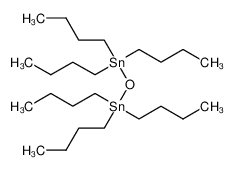




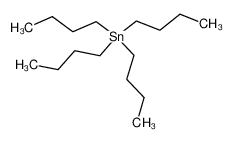
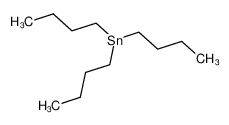




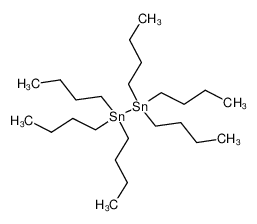



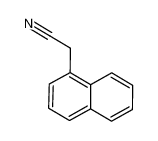





-
-

-
-
-

-
-
-

-
-
-

-
-
-

-
-
-

-
-
-

-
-
-

-
-
-

-
-
-

-
More Suppliers>>Changzhou Xinxinglian Biotechnology Co., Ltd.
CHINA
Purity: 98%
Lead Time: 7 Day(s)
Price: -
Hangzhou J&H Chemical Co., Ltd.
CHINA
Purity: 98%
Lead Time: Day(s)
Price: -
Skyrun Industrial Co., Limited
CHINA
Purity: 99%
Lead Time: 7 Day(s)
Price: -
Hangzhou DayangChem Co., Ltd
CHINA
Purity: 98%
Lead Time: 7 Day(s)
Price: -
Hangzhou Bingochem Co., Ltd.
CHINA
Purity: 98%
Lead Time: 7 Day(s)
Price: -
Shanghai Ziming Reagent Factory
CHINA
Purity: 96%
Lead Time: 14 Day(s)
Price: Min $2273 /kg
CHINA
Purity: 99%
Lead Time: 3 Day(s)
Price: Min $100 /桶
Shanghai Civic Chemical Technology Co., Ltd.
CHINA
Purity: 95+%
Lead Time: 7 Day(s)
Price: Min $40 /g
Shanghai Yusi Chemical Co., Ltd.
CHINA
Purity: 96%
Lead Time: 10 Day(s)
Price: Min $36.33 /g
Shanghai Yusi Chemical Co., Ltd.
CHINA
Purity: 96%
Lead Time: 10 Day(s)
Price: Min $132.5 /g